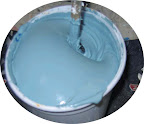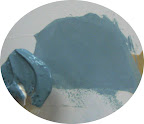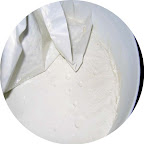Fine Firenze Rivesto Marmorino Application Demonstration
Italian Plaster called Marmorino is a 99% natural lime based plaster with 42% marble that comes from
Many “Venetian Plasters” on the market are neither Venetian nor Plaster they are American, and are paint. These are thick acrylic paints with color and chalk added as add mixtures. The resulting products are synthetic and are faux finishes. Our lime has a high alkaline content and it acts as a natural anti mold agent on your walls. The product does not emit any toxic fumes or odors. It is harmless to the applicator and to the resident.
Because this product is produced from lime and marble, it will dry back into stone again. This is known as the lime cycle. Lime is the only stone that can be pulverized, liquefied, and after application becomes lime again (calcium carbonate). The shine and polish is natural not reliant on any waxing. The applicator is literally applying what will become rock on the walls. It has the property of absorbing humidity as well as keeping areas cool - natural air conditioning.
A word about coloring lime based Marmorino and Venetian Plasters
There are three different types of tints or colorants that we use in our Venetian Plasters. There are natural/mineral tints that come from the earth and are mixed into the plaster to give a desired color. We also use low VOC tints (Volatile Organic Compounds) which use a biodegradable food additive as a base. Low VOC tints are highly recommended for colors to be consistent when there is a large job that will require dozens of buckets of product. Finally we use universal/synthetic tints that have ethylene glycol as a base. Natural pigments are best in order to keep the Venetian Plaster natural. The coloring will be more challenging to keep consistent when mixing into multiple 5 gallon buckets. The final result is a semi glossy, translucent surface with natural color ranges. Products with high synthetic content affect the product’s translucence and viscosity while being less than natural. Venetian Plaster that has to be tinted to dark colors generally will require additional effort and sealing in order to provide a
three-dimensional wet finish. Venetian Plaster mixed with low VOC tints will maintain the translucence of the product and will produce no toxic odors.
Applying the three coats:
The first and thickest coat is applied with a stainless steel trowel only; otherwise product can be stained by metal. The product is skim coated or floated over a primed, smooth, level 4 / 5 wall. Do not apply in straight lines and do not go over the same area too many times. After first coat is fully dry (preferably overnight) apply enough material to completely cover the first coat and leave it smooth and unpolished. If necessary, lightly sand high spots and corners with sanding block size 400. Apply thinly and evenly. Do not compress product. The third coat is applied after the 2nd coat is fully dry and the high spots and corners have been sanded down. Apply thin coat with a bit of pressure to allow the product to adhere to 2nd coat. Cover about 4 - 6 sq feet and go back to burnish. Here is where the product will bring out its shine as well as its translucence. Burnish and check by viewing wall from side for sheen and reflection. After the third coat has been burnished and dried, apply the water based impregnation paste. Apply as much as the product with absorb and make sure to wipe off the excess in order to avoid unfavorable results. The impregnation paste is not a wax.





We have been educating individuals with much experience and with no experience for more than ten years. We dedicate our time and efforts expanding this business to many more cities in the


No comments:
Post a Comment